Reserved Instances
List of supported services
SQL Database
Azure Database for MySQL
Azure Database for PostgreSQL
MySQL
PostgreSql
Virtual Machines
Utilization
The utilization widget shows the percentage of Total RI (Reserved Instance) utilization for the selected period of combined AWS and Azure provider. This allows you to see the extent to which you are using your RIs and how much of your RI commitment has been fulfilled. This can help you understand the effectiveness of your RI usage and identify any opportunities for optimization.
Effective Cost
The effective cost widget shows the amortized upfront and recurring cost of the reservation hours that you have purchased for combined Azure and AWS. This allows you to see the total cost of your RIs, including both the upfront payment and the recurring hourly cost. This can help you understand the overall financial impact of your RI usage and identify opportunities for cost optimization.
Net Savings
The net savings widget shows the net savings amount that you have realized from your current RI utilization rate for combined AWS and Azure. This allows you to see the financial benefit of using RIs, as compared to using On-Demand resources for the same usage. This can help you understand the cost savings that you have achieved through your RI usage and identify opportunities for further cost optimization.
For Example:
On Demand Cost Equivalent: $7.74
Effective Reservation : $4.74
Net Savings : $2.98
Potential Savings
The potential savings widget shows the potential savings amount that you could achieve if your RIs were fully utilized combined Azure and AWS. This allows you to see the maximum cost savings that could be achieved through optimal RI usage and can help you identify opportunities to increase your RI utilization.

Data does not include usage covered under free tier or credits.
RI Utilization Chart
The RI Utilization Chart presents a graphical representation of the used and unused hours for each month. You can hover your mouse over the chart to view the used and unused hours, as well as the utilization percentage for each month. When you click on a bar in the chart, the RI Widgets, Geo Chart, and RI items will display data accordingly.
You can expand or restore the view of the RI Chart by clicking the square icon. Additionally, you can download the chart by clicking the download icon. This can help you understand the distribution of your RI usage over time and identify any trends or patterns.
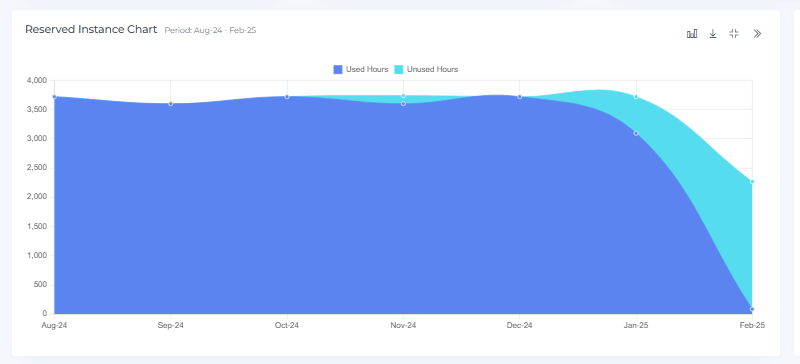
The "Period" selection allows you to filter cost data by different time ranges, such as monthly (e.g., "Last 12 months"), weekly, or daily (e.g., "Last 30 days," "Last 90 days"). This helps analyze spending trends over specific timeframes.

The RI Utilization Chart allows you to view utilization hours and utilization percentage by changing the Y-axis combined for AWS and Azure. This allows you to customize the data displayed on the chart and better understand your RI usage.
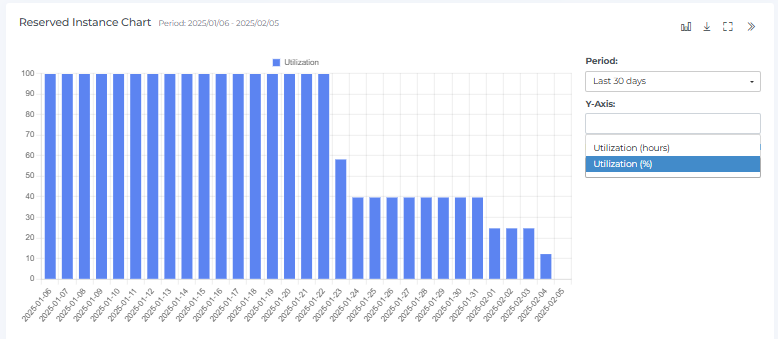
The RI Utilization Chart allows you to switch between different chart types, such as bar charts and line charts, to visualize the data in different ways. This feature allows you to choose the chart type that best represents the data and helps you understand your RI usage more effectively combined for both AWS and Azure
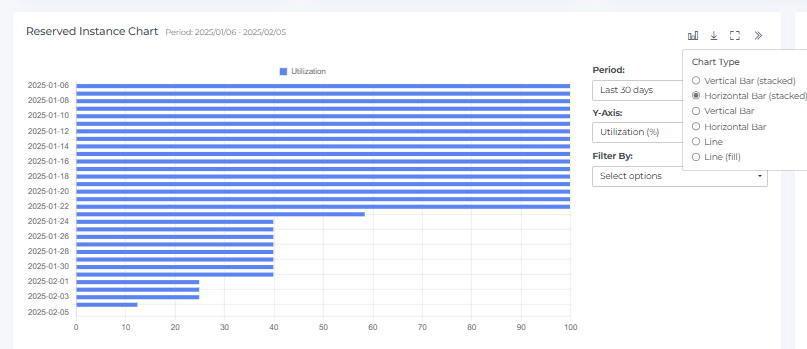
The RI Utilization Chart allows you to filter the data using various options. For example, you can filter the data by date range, service, or usage type to narrow down the data and focus on specific aspects of your RI usage. This can help you better understand and analyze your RI usage combined for both AWS and Azure
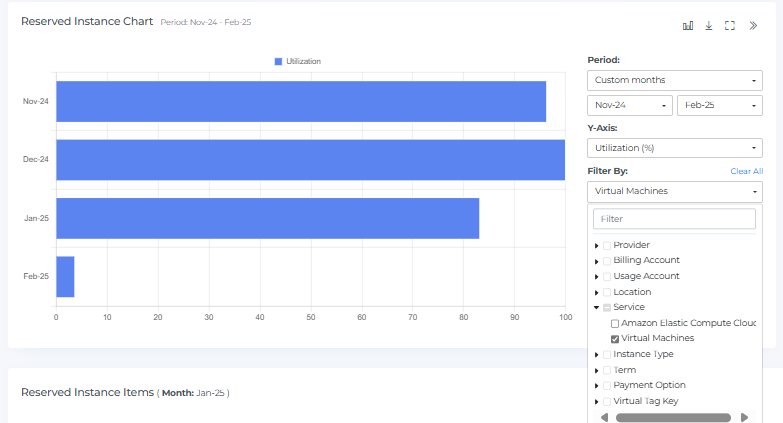
Geo Chart
The RI Geo Chart displays the data points for the selected month, showing the number of Reserved Instances in each region combined for AWS and Azure. You can hover your mouse over the data points to view the region name and the number of Reserved Instances in that region.
The maroon color indicates a higher level of RI usage in that particular location. If there are two data points that overlap, a small magnifying glass icon is displayed.
You can use the drop-down menus to change the location and month, allowing you to view data from different regions and months. This can help you understand the geographical distribution of your RI usage and identify any trends or patterns.
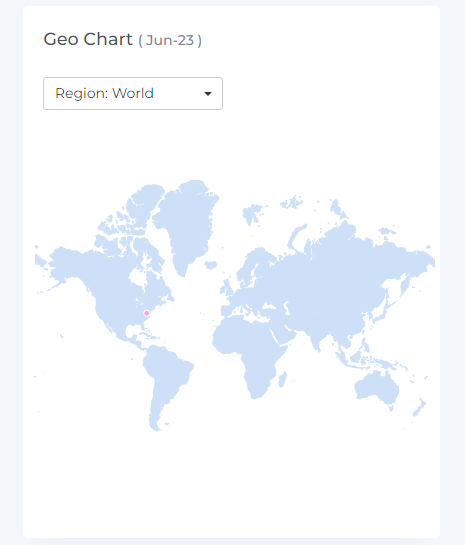
RI Utilization Items
The RI Items display a list of all the Reserved Instances for the selected month combined for AWS and Azure. By default, this list includes all the RIs that were used during that month. The list includes details such as the RI type, the usage type, the region, and the cost savings achieved. This can help you understand the specific RIs that were used during the selected month and how much money was saved through the use of these RIs.
When you select the number of rows, you will be able to view that same quantity of rows on the page.

When you click on a specific bar in the RI Utilization Chart, the RI Items will display the associated Reserved Instances for that particular item. For example, if you click on a bar representing the data for the us-east-1 region, the RI Items will show the Reserved Instances used in that region.
The RI Items can be sorted, searched, and downloaded. You can also click on the settings icon to change the way the data is displayed. The number of RI Items displayed will depend on the selection you make in the settings. This can help you more easily analyze and understand your RI usage.
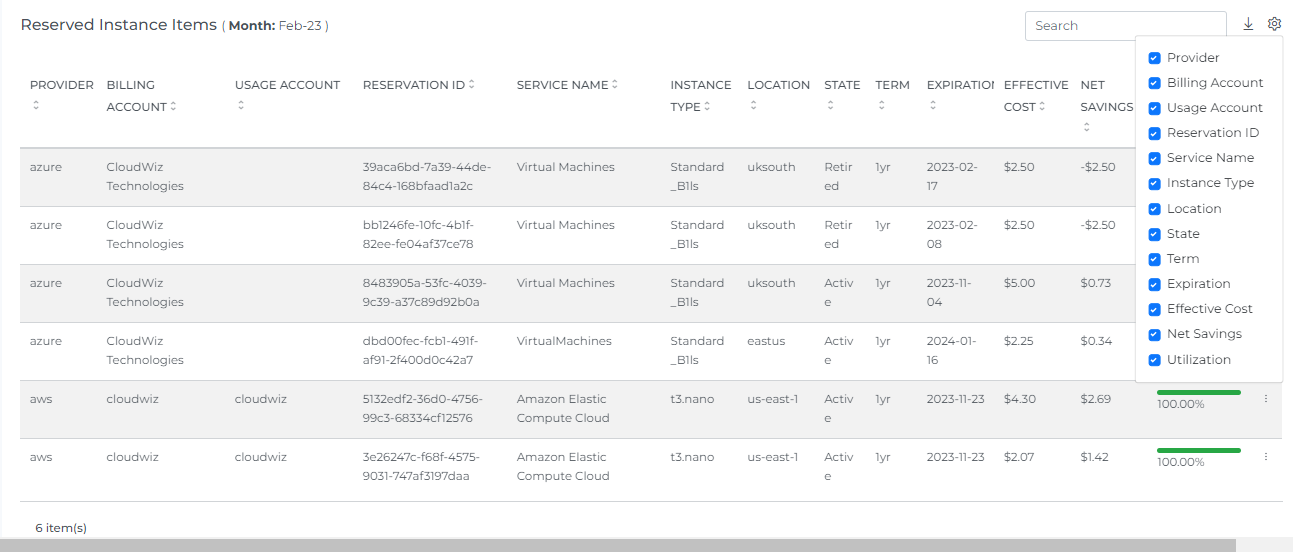
If you click on the three dots in the upper right corner of a specific Reserved Instance, you will be able to access additional information about that instance. This includes a utilization percentage graph, details about the utilization of the instance, and information about the coverage provided by the instance. This can help you better understand the performance and effectiveness of each individual Reserved Instance.
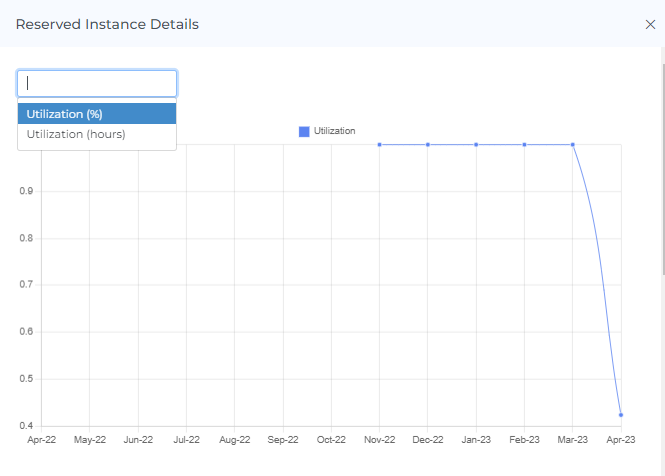
In the utilization percentage graph, you can choose to view utilization percentage or utilization hours. If you select utilization percentage, you will be able to see the related month's utilization percentage when you hover your mouse over the graph. This allows you to see how the utilization percentage has changed over time and how it compares to the other data points.
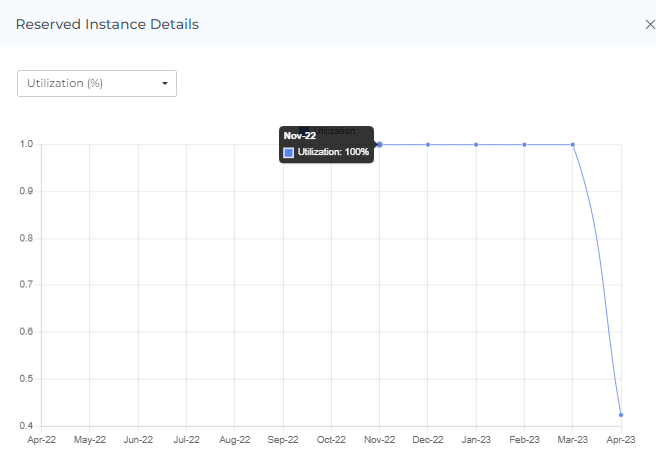
If you choose to view utilization hours in the utilization percentage graph, you will be able to see the related month's used and unused hours when you hover your mouse over the graph combined for AWS and Azure. This can help you understand the distribution of used and unused hours for each month and how it has changed over time.
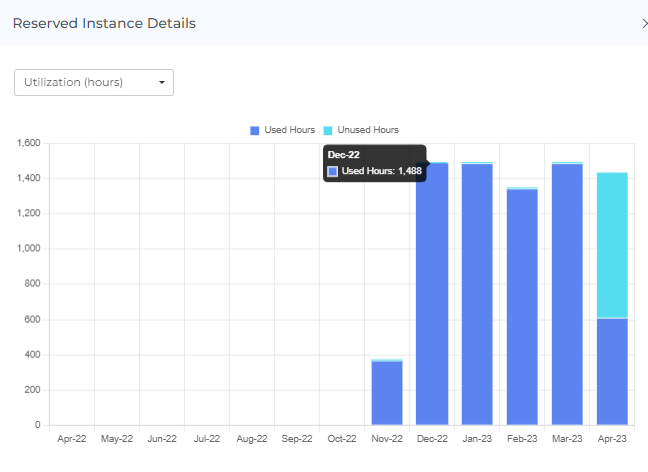
When you click on a specific bar in the utilization percentage graph, the related month's details and coverage will be displayed. For example, if you click on the bar representing the data for October 21st, you will see the details and coverage for that month.
The details and coverage information can provide you with more information about the specific Reserved Instances that were used during the selected month, as well as the overall coverage provided by those instances. This can help you more effectively analyze and understand your RI usage.
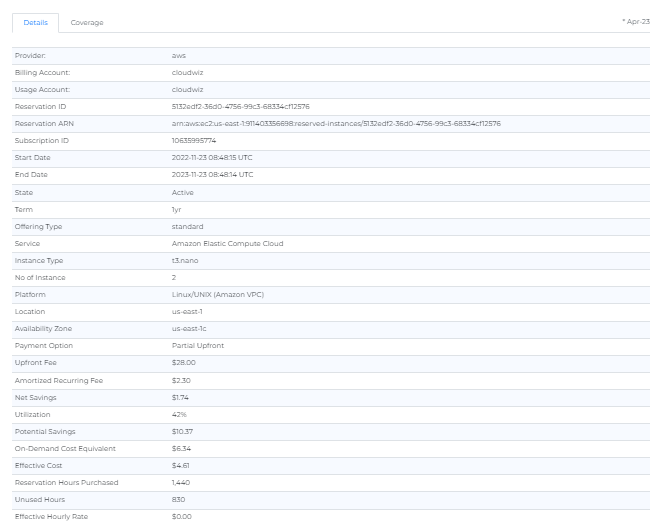
Header Icons

Share
If you click on the "share" link, a link to the current page will be copied to your clipboard. You can then share this link with other team members, allowing them to access the same data and filters as you. This can be useful for collaborating with others and sharing information about your RI Utilization Page
RI Utilization Filters
Basic
The filter option allows you to narrow down the data displayed on the page to specific criteria. You can use the filter to view RI Utilization for a particular billing account, usage account, location, term, type, instance family, or payment option. This can help you focus on specific aspects of your RI Utilization to more effectively analyze and understand the data.
On selecting Dynamic Filter adjusts options based on previous selections. For example, choosing a Provider will update subsequent filters (e.g., Billing Account, Locations) to show only relevant data for that provider. This ensures efficient and context-sensitive filtering.
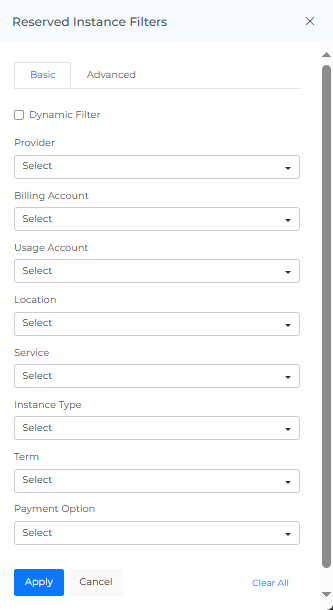
Advance
The "Advanced RI Filters" feature use to apply detailed filters to refine search results. You can add multiple filters by selecting criteria like "Provider" choosing an operator (e.g., "IN"), and selecting values from dropdown menus. The interface includes options to apply or cancel changes and a "Clear All" button to reset filters.
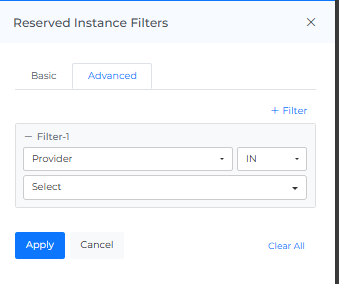
Screenshot
If you click on the camera icon, you can take a screenshot of the current page and download it as a PDF file. This can be useful for saving a copy of the data or for sharing it with others.
Reload Option
The "reset" option allows you to clear all filters and selections from the page, returning it to the default view. This can be useful if you want to start over or view the data in its original form.
Info
The "last updated" date and time stamp show when the data on the page was last refreshed. This can be useful for understanding the age of the data and determining if it is up to date.
Help
If you click on the "?" icon, you can access the help documentation for the page. This can provide you with additional information and guidance on using the page and its features.
